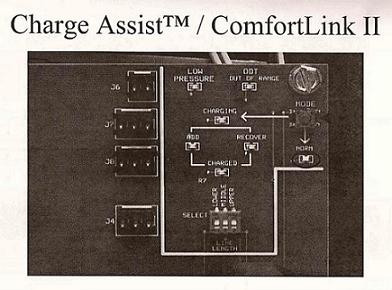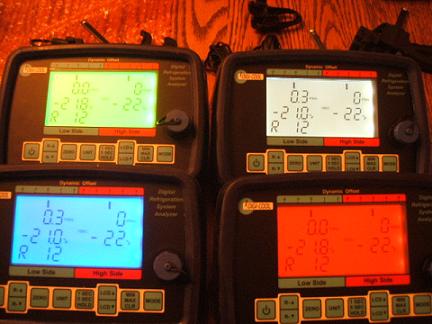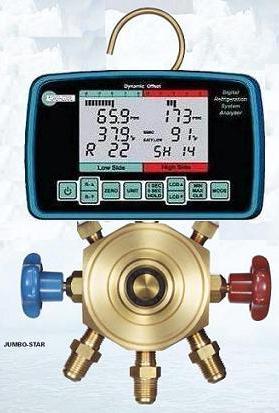A discussion at the HVAC PROTech.com® boards this morning provided some food for thought for me all day long. – Not so much about the actual content of the discussion we were having on the boards, but a portion of it anyway. What is it that sets the digital manifold gauge OEM’s apart – what are the differences that makes a technician elect one brand over the other. If you’re first response was cost – then move along, this article isn’t directed at or for that matter can even be understood by window shoppers. The only guys that will understand the direction of this article are those that understand the value of a quality diagnostic instrument – tangible and intangible values.Look at the advances that the digital age has brought to the simple manifold gauge, probably inconceivable as little as 6 years ago or so give or take. More importantly to me at least are the changes that a few men, men with a vision have brought to the manifold gauge and in the process revolutionized a segment of our industry that had seen essentially no change, no advancement for nearly as long as the trade is old. {If you’re one of the guys that respond to that statement with “yea because it didn’t need any changing”, I would remind you that statistically well over 70% of all of the systems in the United States are improperly charged – you do the math.}
One of the things that is, or at least should be a determining factor in which OEM we elect to do business with is, what they know about the trade. Why? Because the pure unvarnished truth is that we – the professional service and installation technicians are the backbone of this trade. We are the ones that make things happen, when they have to happen. It doesn’t matter if it’s below zero, over 100°F – in a chiller/boiler room, crawl space or attic we do what has to be done to make this industry and this trade’s heart beat, neither the industry as a whole nor our trade could draw another breath without us. The people that are designing these instruments, that help us do the magic that we do everyday should damn well be as familiar with what we do and the places we do it in as we are. How could they not be? Think about it. Could you design a new and improved fuel cone for a nuclear reactor? {If you answered yes to that, what the hell are you doing reading this. 😉 } How can you design a better mouse trap if you don’t even know what a mouse looks like?
Doug Lockhart is a man, that if you’re reading this article, you’ve probably heard of. Doug, with the support of his wife Brenda are responsible for founding two very significant orginizations – Lockhart Industries and the more familiar Digi-Cool® Industries. One, in my mind is significant because of the other. Digi-Cool® Industries alone would hold no more significance to me than Ron Popeil: http://www.ideafinder.com/history/inventors/popeil.htm and some of his “set-it and forget-it inventions”. Lockhart Industries: http://www.lockhart.bc.ca/projects.htm on the other hand is one of the most respected geo-exchange contractors in the international market. That’s important to me because Doug knows what I know – what you know, what we all know. Pretty tools without functionality are completely useless. Hate to beat a dead horse to death, {I really don’t.} but just think back a piece to Tif® and Robinair® digitals – on second thought don’t, they weren’t pretty and they sure the hell wasn’t functional.
Lockhart has been and continues to be in the same places that we all find ourselves in daily. His design – a design by the way that took 20 years from concept to fruition: http://hvacprotech.forumwise.com/hvacprotech-thread3012.html reflects that fact time and time again. It’s the single digital manifold gauge that is as at home in residential applications as it is in commercial, industrial or transport ACR applications. I’ve done things to these gauges that most techs wouldn’t do to a hammer and they take it and keep taking it.
It’s been nearly two years now since I bought the first 1100 DRSA™. I’ve since purchased the 1200 and will also purchase the 1250 {pictured below}. Digi-Cool® has a policy of technician support that remains unparalleled – ask anyone that’s ever dealt with either of the Lockhart’s – Brenda or Doug and you will not find anyone that does not agree. You want an OEM that will support the product beyond it’s 2 year warranty period – this is the one. You know about the old cliche “guilt by association” look around you at the caliber of the technicans that use this instrument – on HVAC PRO™ Forums, HVAC-Talk™ and HVAC PROTech® and the association of one of the most trusted names in the HVAC/R trades, Ritchie Yellow Jacket® with Lockhart’s Digi-Cool®. All of these folks are not wrong my friends.
I’ve personally been in this trade in some service capacity level or the other for almost 30 years now. I’m currently a regional service director for one of the largest residential and light commercial contractors in North America. We don’t use cheap instruments and tools that have the potential of affecting our reputation. Go to the Digi-Cool® website: http://www.digi-cool.com get Lockhart’s number and talk to him directly. Tell your distributor you wanna see a Yellow Jacket® DRSA™. If you’re serious about your craft – shouldn’t the instruments you use be just as serious.
See the Digi-Cool® 1250 DRSA™ at the AHR™ Expo in New York City next week. Talk to Lockhart – you won’t regret it.









